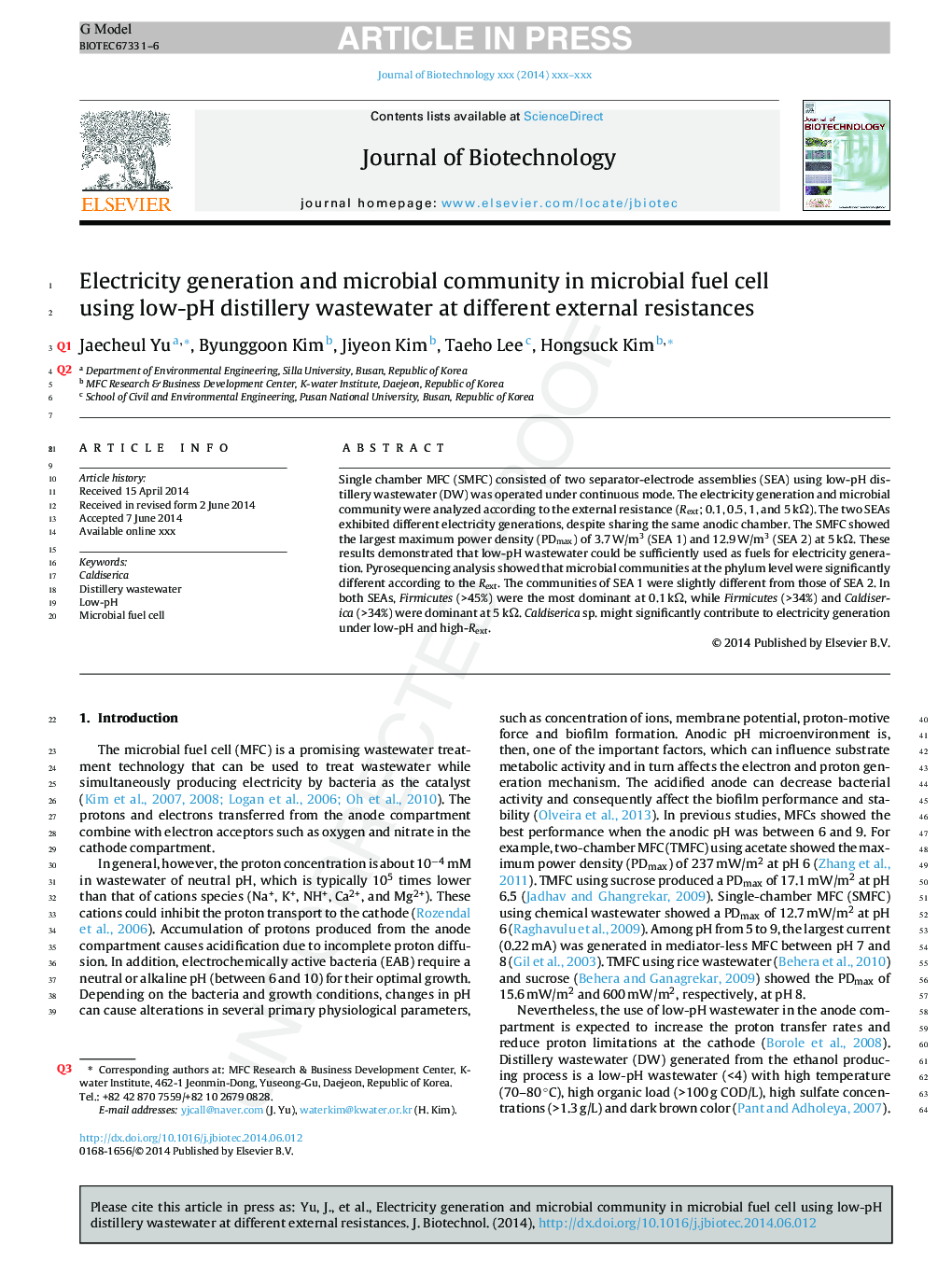| Article ID | Journal | Published Year | Pages | File Type |
|---|---|---|---|---|
| 6491503 | Journal of Biotechnology | 2014 | 6 Pages |
Abstract
Single chamber MFC (SMFC) consisted of two separator-electrode assemblies (SEA) using low-pH distillery wastewater (DW) was operated under continuous mode. The electricity generation and microbial community were analyzed according to the external resistance (Rext; 0.1, 0.5, 1, and 5 kΩ). The two SEAs exhibited different electricity generations, despite sharing the same anodic chamber. The SMFC showed the largest maximum power density (PDmax) of 3.7 W/m3 (SEA 1) and 12.9 W/m3 (SEA 2) at 5 kΩ. These results demonstrated that low-pH wastewater could be sufficiently used as fuels for electricity generation. Pyrosequencing analysis showed that microbial communities at the phylum level were significantly different according to the Rext. The communities of SEA 1 were slightly different from those of SEA 2. In both SEAs, Firmicutes (>45%) were the most dominant at 0.1 kΩ, while Firmicutes (>34%) and Caldiserica (>34%) were dominant at 5 kΩ. Caldiserica sp. might significantly contribute to electricity generation under low-pH and high-Rext.
Related Topics
Physical Sciences and Engineering
Chemical Engineering
Bioengineering
Authors
Hongsuck Kim, Byunggoon Kim, Jiyeon Kim, Taeho Lee, Jaecheul Yu,
